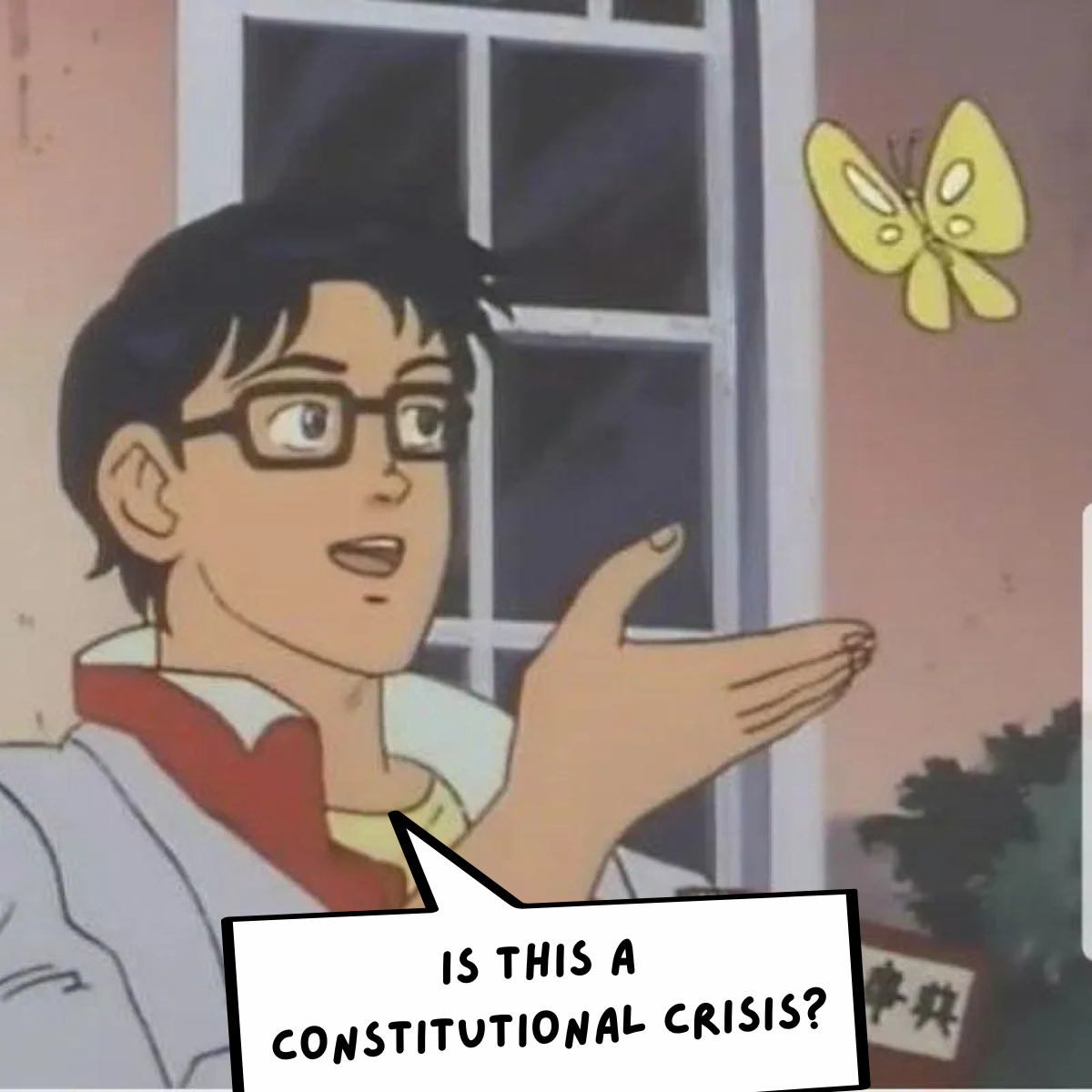Since the beginning of President Donald Trump’s second term, the phrase “constitutional crisis” has been used repeatedly by the media and pundits alike:
“Trump’s defiance of the courts puts America into a constitutional crisis” -The Sacramento Bee
“‘If You Can Keep It’: America in Constitutional Crisis” -NPR
“Trump’s Actions Have Created a Constitutional Crisis, Scholars Say” -The New York Times
But the phrase “constitutional crisis” has been used before – about everything from who should take over when President William Henry Harrison died just one month into his tenure in 1841 to if the Supreme Court had the power to stop a vote count in 2000.
What is a constitutional crisis, exactly?
The simplest definition of a constitutional crisis is when the U.S. Constitution fails to work as designed or is ignored by a branch of the government.
Generally, the Constitution designed a government organized around three coequal branches of government that are coequal. Each branch imposes checks and balances on the others. These branches often are in conflict with one another, but the crisis occurs when one branch stops honoring the checks of the other branches.
An example of a conflict between branches that was not a crisis occurred in 2016, when then-Senate Majority Leader Mitch McConnell refused to hold a hearing for President Barack Obama’s Supreme Court nominee Merrick Garland.
While the situation may not have seemed in the spirit of the Constitution, Speaker McConnell had a right to decide whether or not to hold a hearing, and President Obama backed down. If the president had decided to seat Garland on the Supreme Court without approval from the Senate, that would have been a crisis.
Are we in a constitutional crisis now?
President Trump’s executive orders have caused a lot of concern about how they seem to evade Congress’s purview to create the laws of our land.
The president has signed over 130 executive orders but only five laws, suggesting that he is relying solely on the power of the presidency to enact his agenda. Many scholars have pointed out that his executive orders direct agencies to stop enforcing laws, which undermines Congressional power.
But the most prominent example that scholars have used is the Supreme Court’s order to return Kilmar Armando Abrego Garcia to the U.S. after he was illegally deported to an El Salvador prison by Immigration and Customs Enforcement. In a 9-0 decision, the court upheld a lower court order, ordering the Trump administration to do whatever is needed to return Garcia home, but months later, the administration refused to comply. So far, the Republican-led Congress has refused to use any power it has to hold the president accountable for the order.
The Constitution did not account for a president who refused to honor our highest court in our land and a Congress that would not stand up to him.
As one scholar says, “But right now, we have an administration that is unconstrained by any internal legal constraints and flirting with ignoring the Supreme Court. This is really unprecedented territory.”


